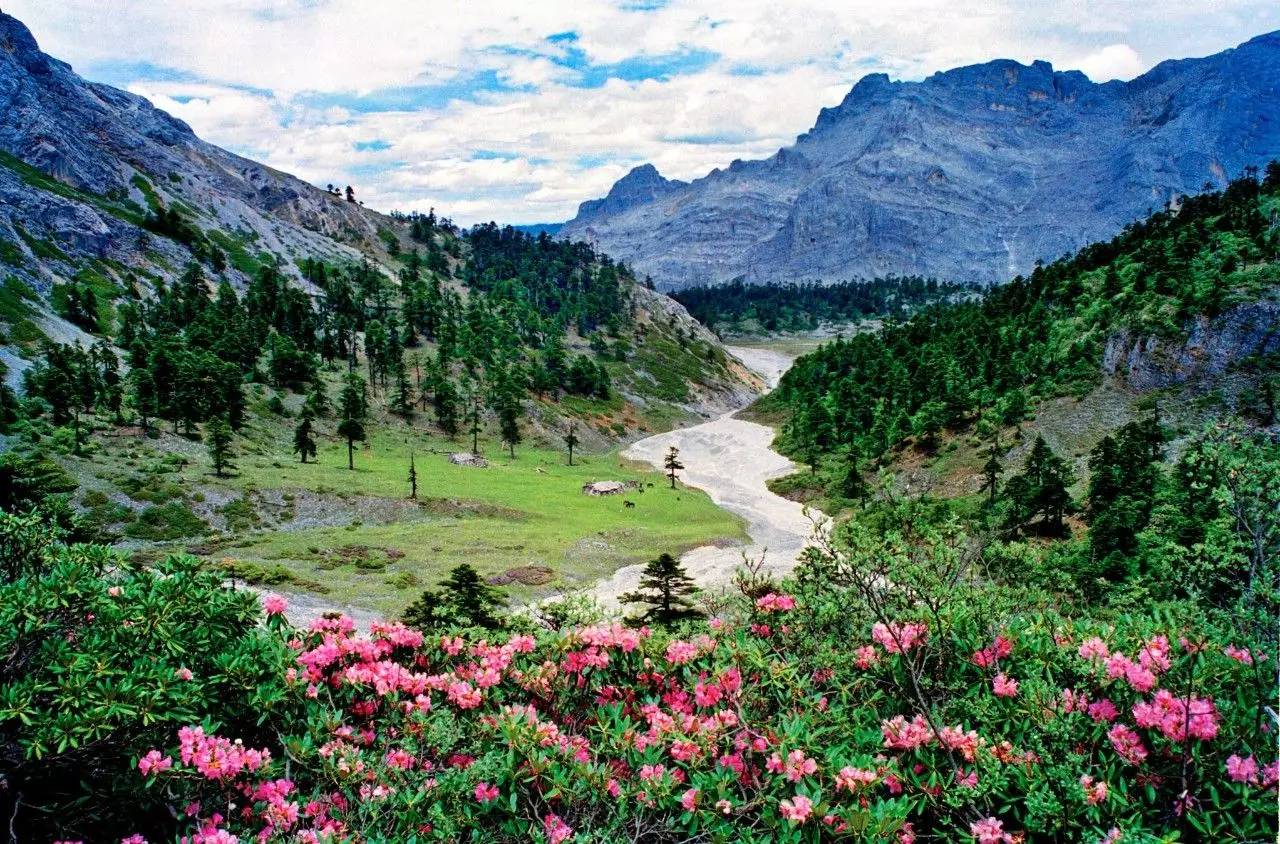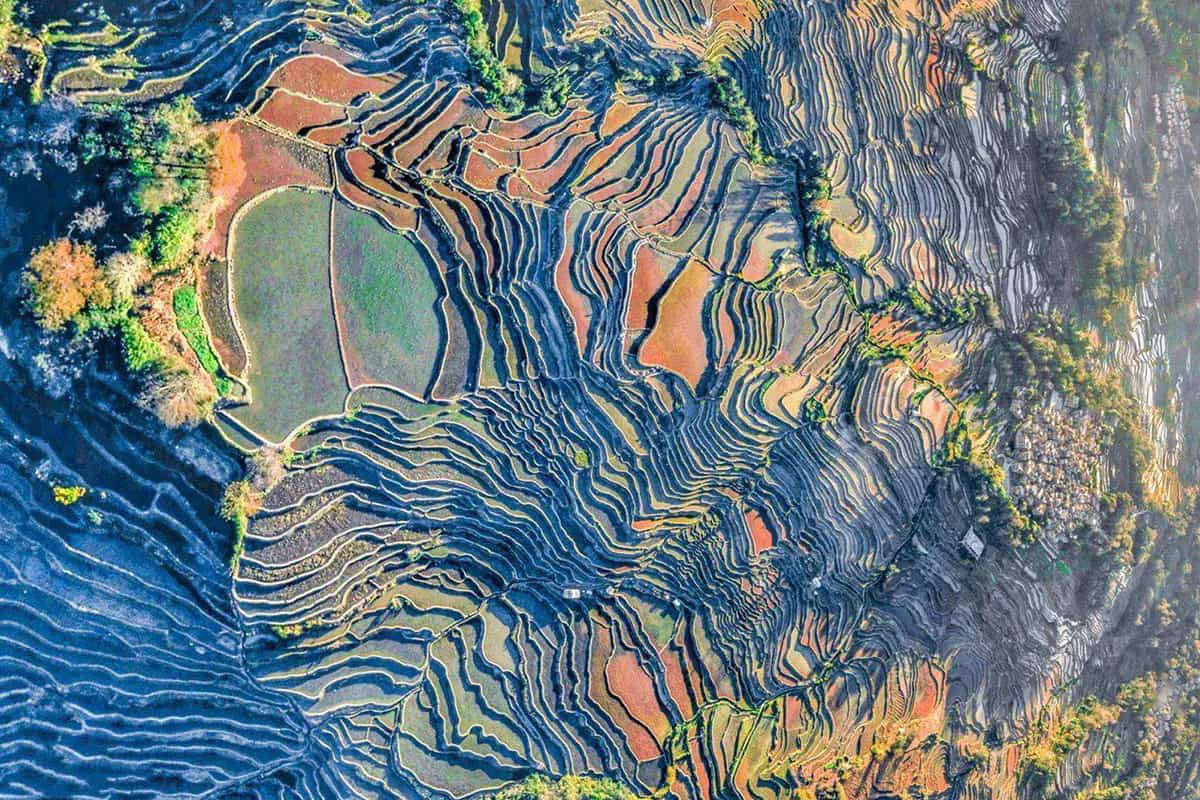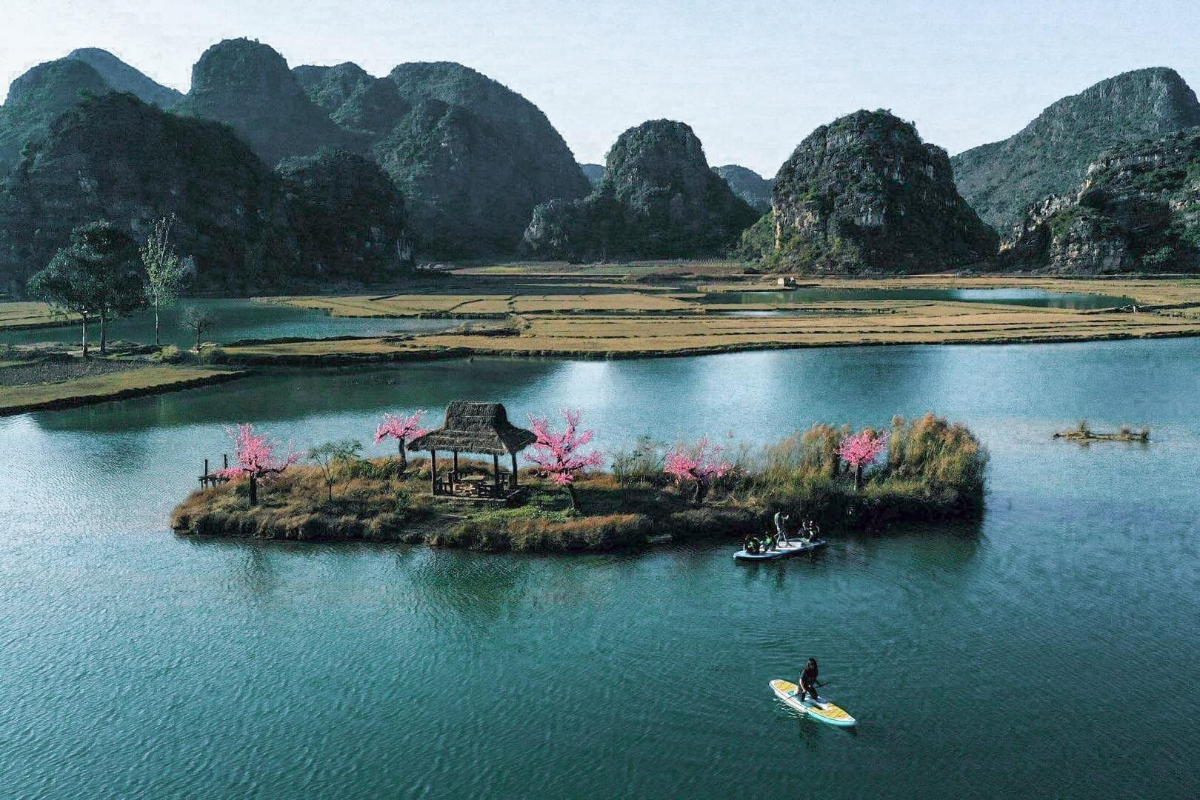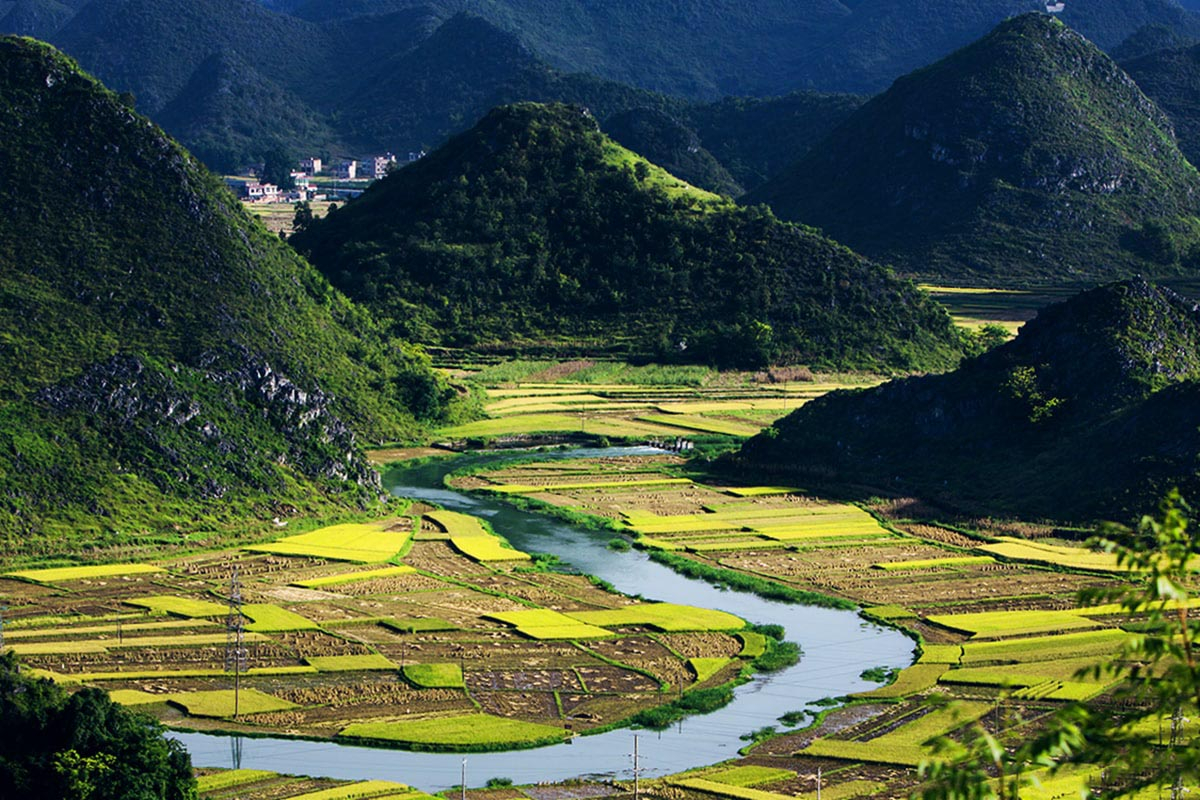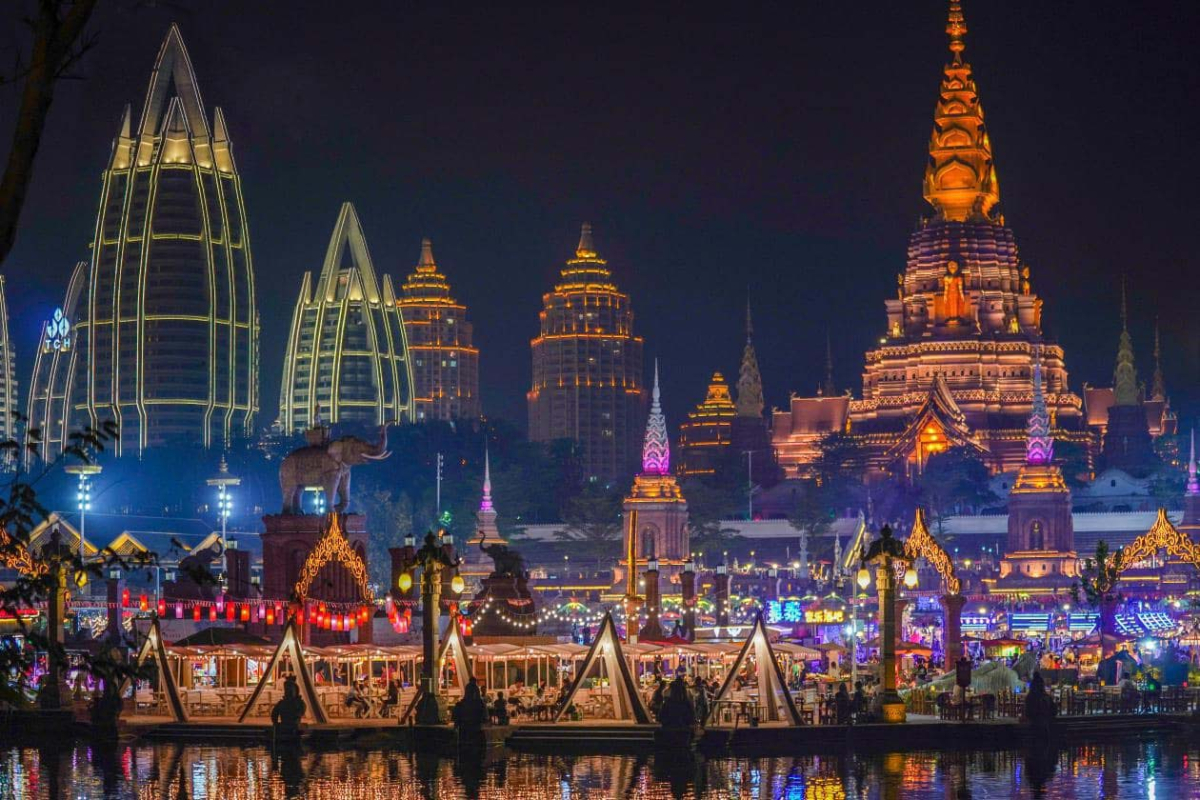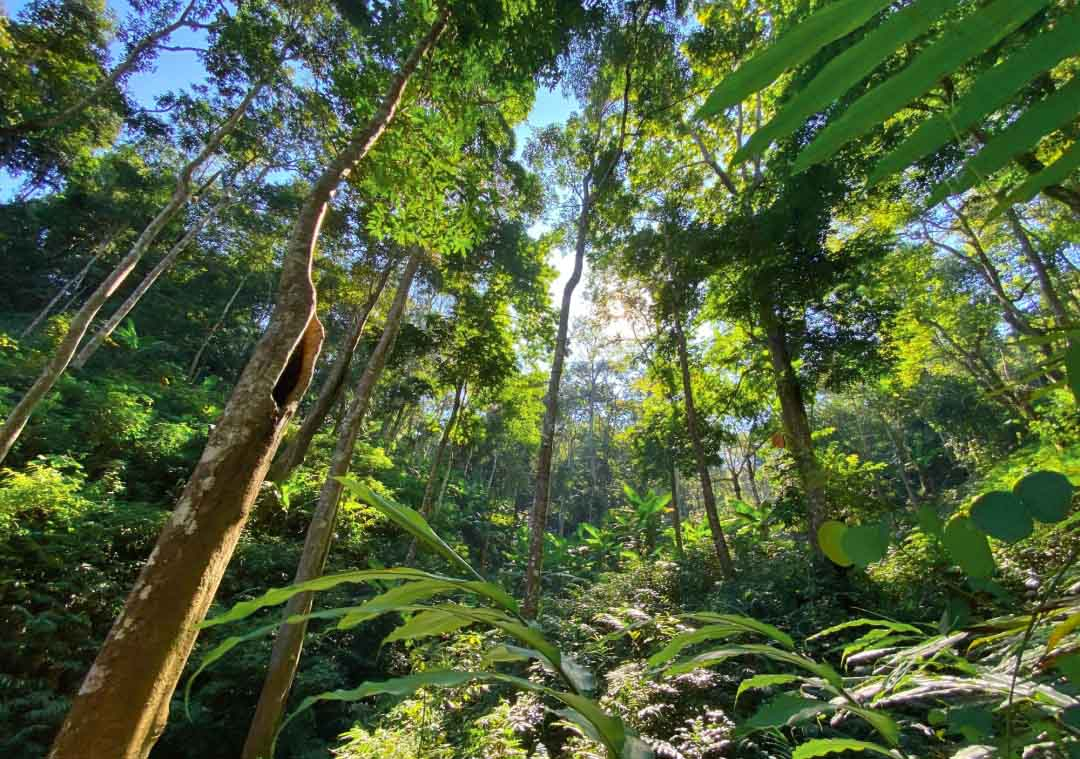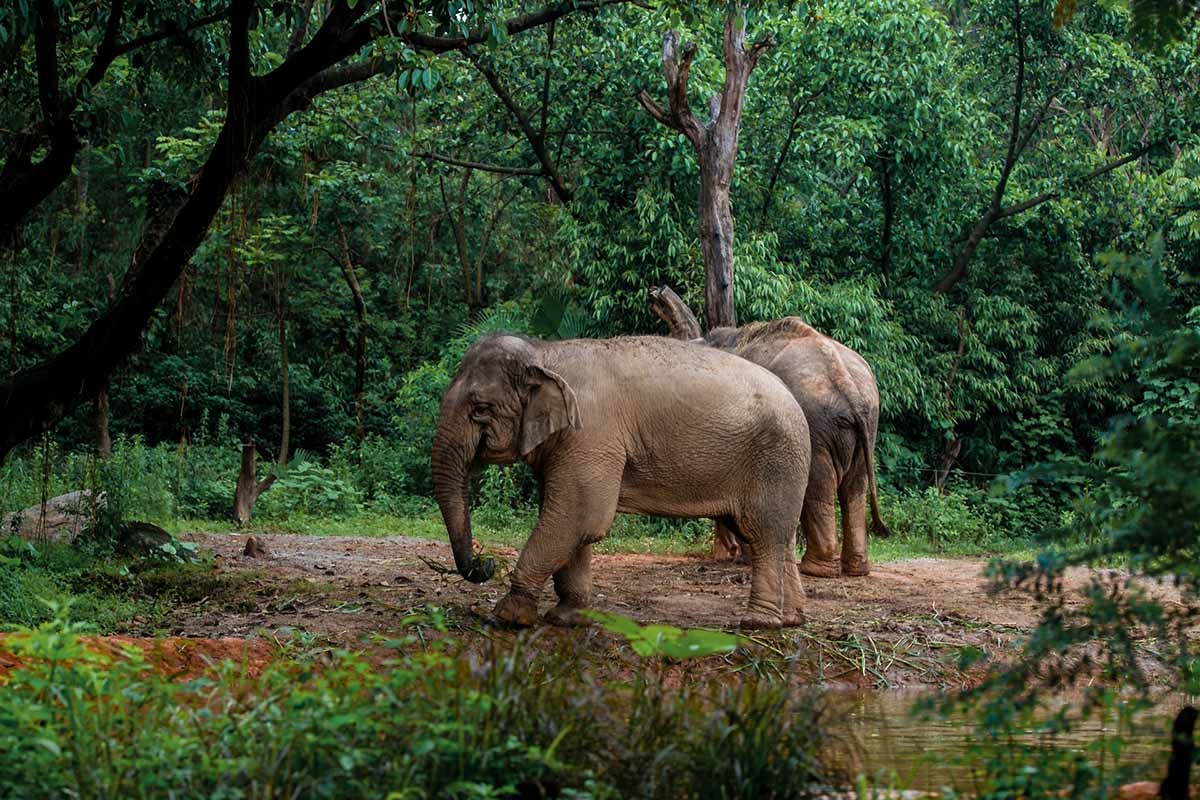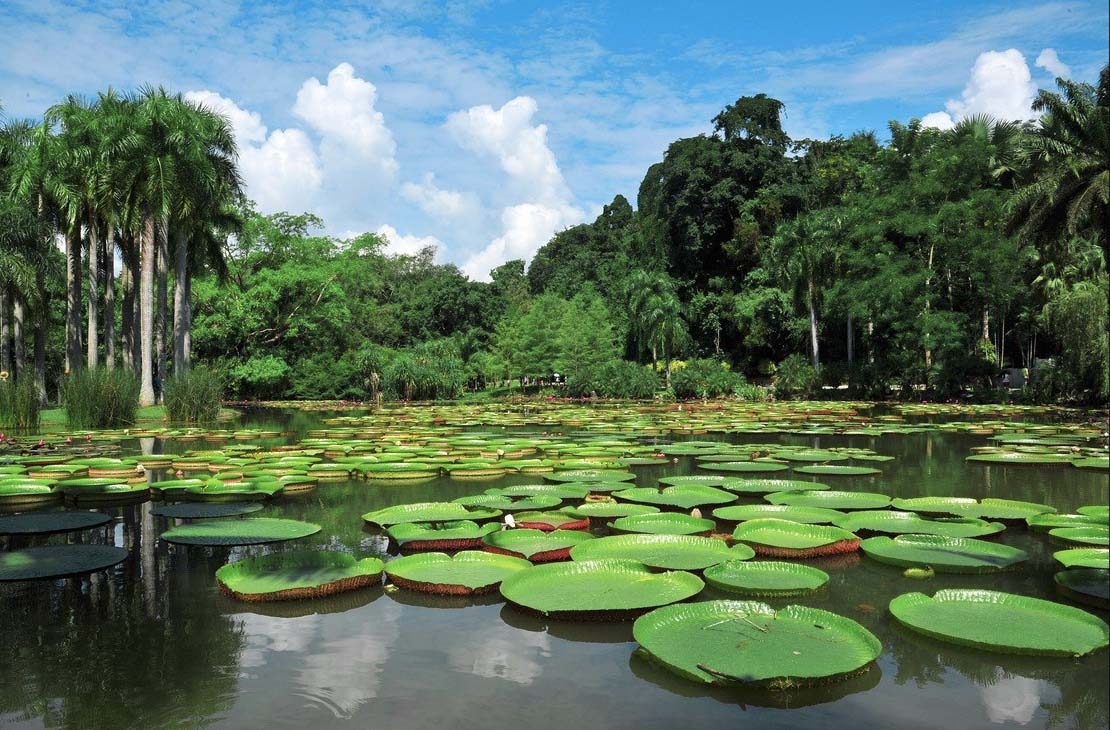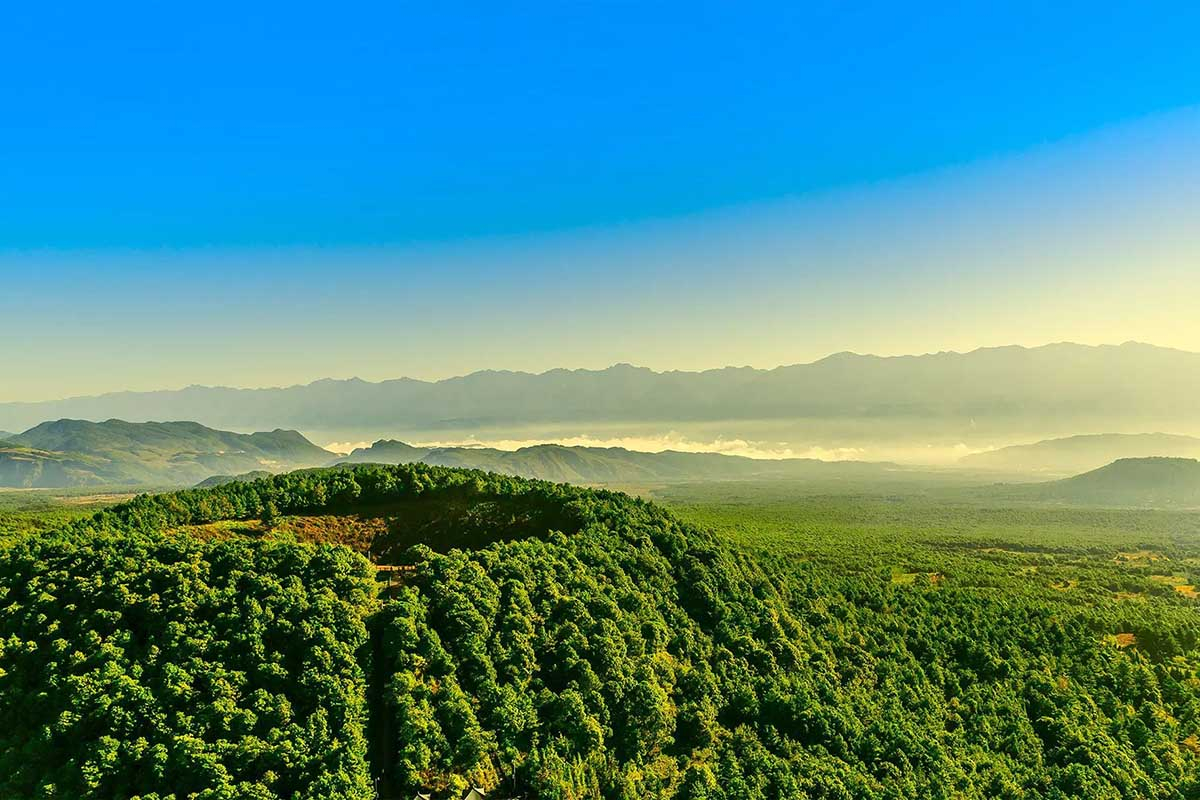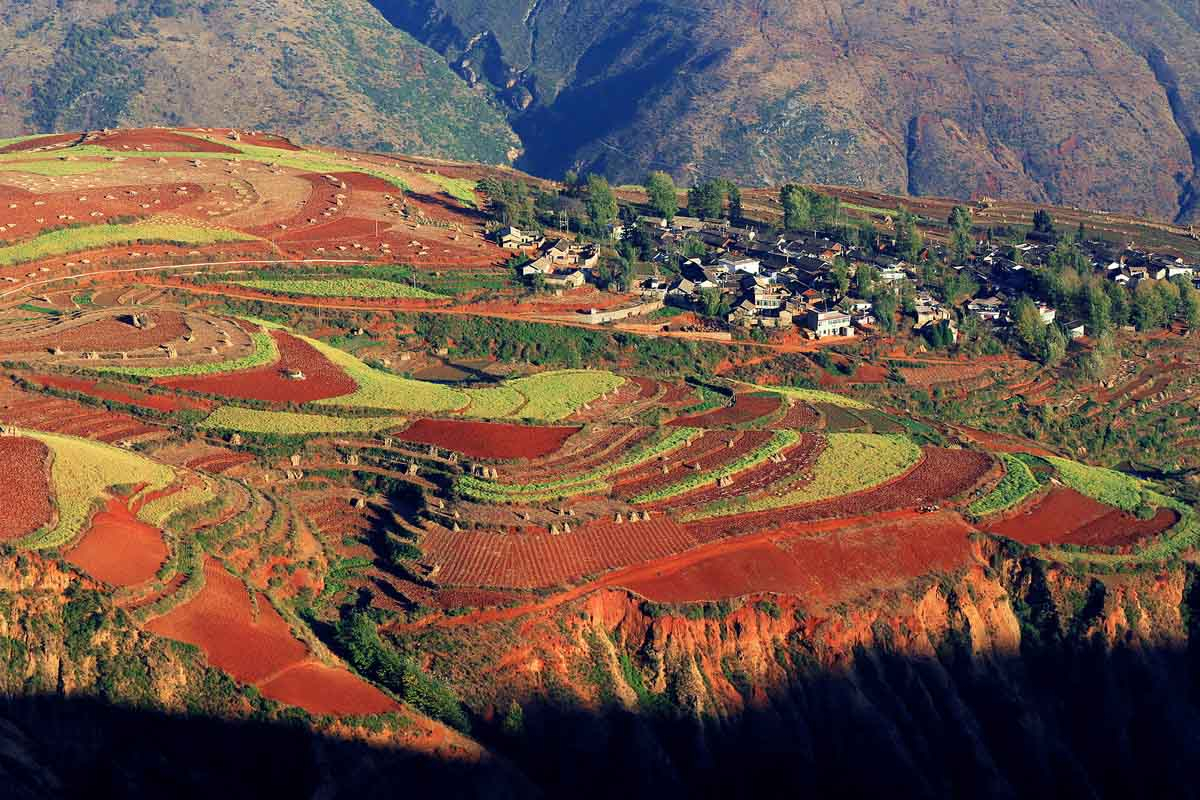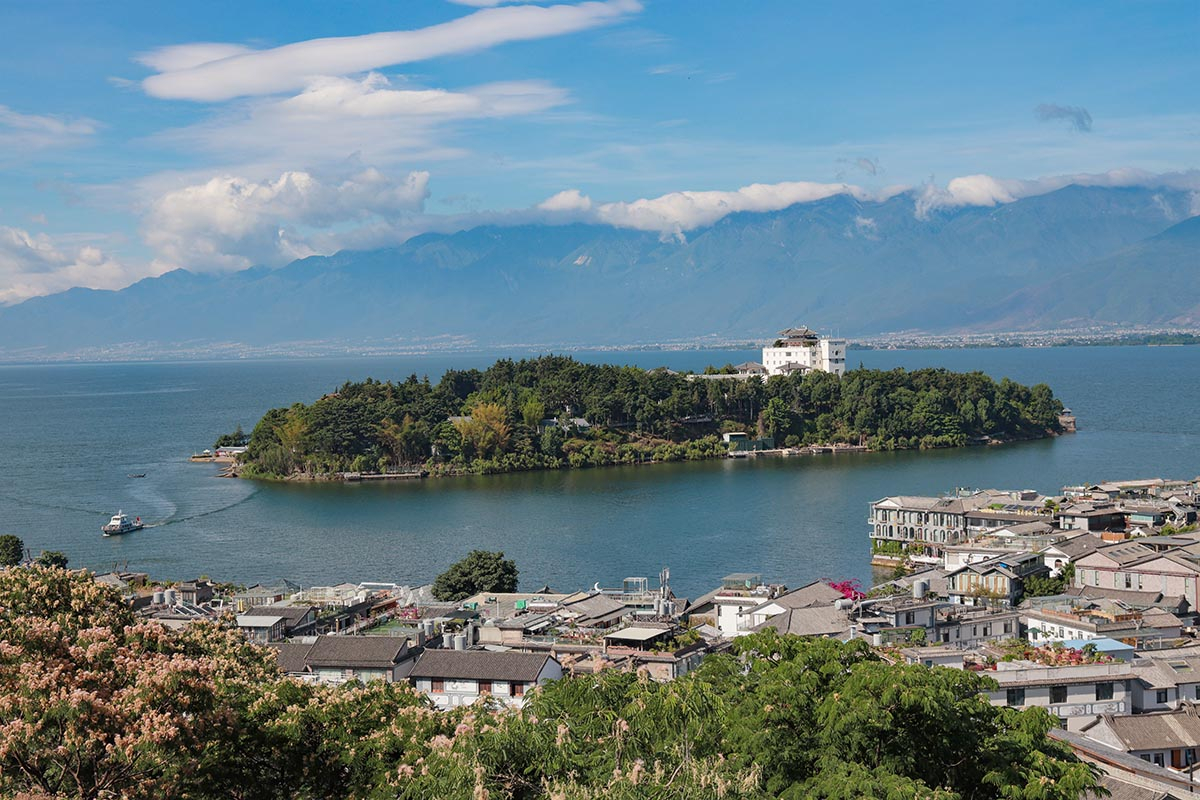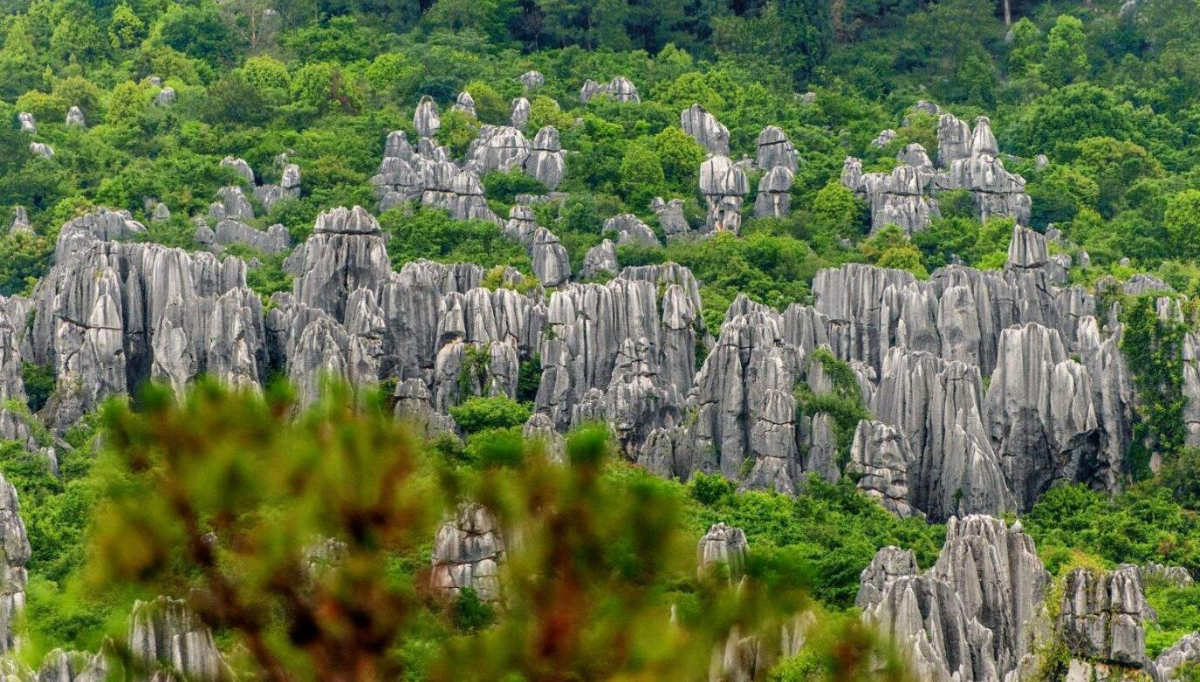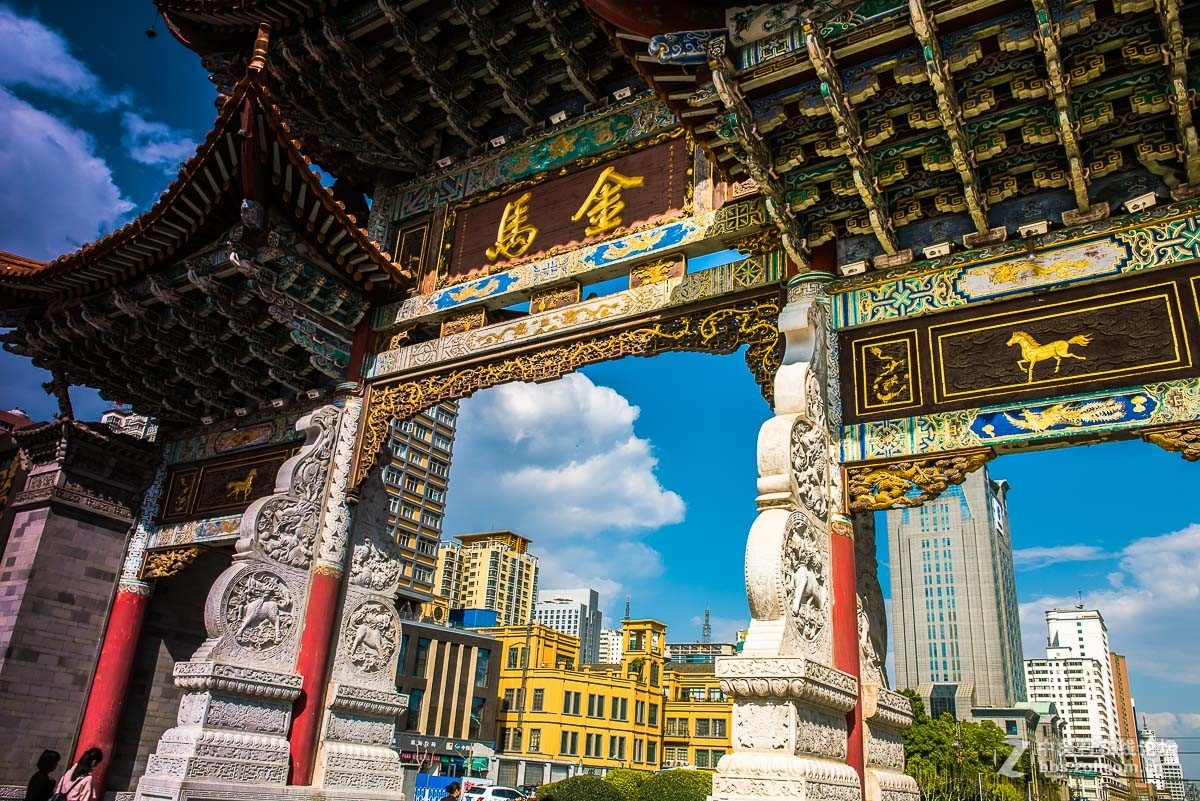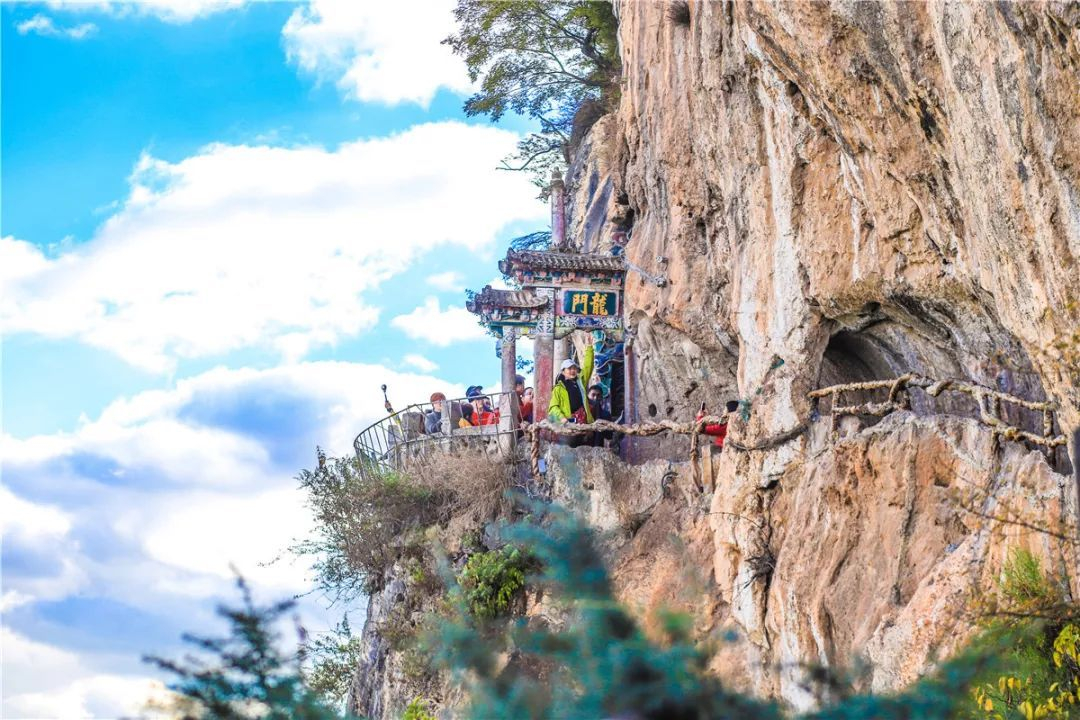Balagezong Scenic Area
Chinese name: 巴拉格宗大峡谷 (Ba La Ge Zong Jing Qu)
Location: Nixi, Shangri-La, Diqing Tibetan Prefecture, Yunnan Province.
Ticket: Entrance ticket CNY150.00, Sightseeing bus CNY60.00
Estimated tour time: 1Day
Recommended time to visit: May-Oct
Nearby attractions: Napa Lake, Dukezong Ancient Town, Ganden Sumtseling Monastery, Potatso National Park, etc.
Balagezong Scenic Area, located about 31 miles (50km) northwest of Shangri-la County, belongs to Hongshan Section in the Three Parallel Rivers of Yunnan Protected Areas. It earns very high admiration for the mysterious ancient Bala Village, hospitable villagers, holy snow mountains, plank road over Gangqu River, and precipitous gorges, especially Shangri-la Grand Canyon. It is a pure land isolated from the outside world, waiting for visitors to discover its unique beauty with rich Tibetan culture.
Walking through the gate, you might notice there is a luxuriantly green bodhi tree. Having gone through three thousand years of rain and wind, the tree is still strong and vigorous. Interestingly, there is a branch resembling a hand of the Buddha, protruding from the trunk. Signifying epiphany and wisdom, the bodhi tree has long been regarded divine, attracting endless stream of Buddhism followers to pray here.
● Highlights of Balagezong Scenic Area
Bala Gezong Grand Canyon
The Bala Gezong Grand Canyon is a stunning work of nature. It is a mythical place you must pay pilgrimage to when you travel in Bala Gezong. On both sides of the main trunk Shangri-La Grande Canyon, there are many branches, such as the Dalarong Canyon, the Bala Canyon, and the Nanka Zhuorong Canyon.The largest altitude difference—from the main summit with an altitude of 5,545 m to the valley with an altitude of 2,000 m—is 3,545 m. Its greatest characteristic is "there is a canyon within or above another canyon and different canyons crisscross and connect with each other."
The cliffs on both sides of these canyons are mostly 1000-2000 m, where the patterns of grotesque rocks and geological folds constitute a giant picture. In the luxuriant original forest, all kinds of exotic flowers and herbs as well as grotesque trees and vines complement each other; rows upon rows of cactus and palms alternate with endless rhododendrons groves and vast expanses of vegetation; a clean and beautiful river meanders forward, and now and then a gigantic wave rises high above water; a swath of the blue sky narrow like a line is wedged between the cliffs on both sides of the canyon, and there are also waterfalls pouring down from the cliffs and the echoing wall...
Everything seems made by magic and looks remarkable. The amazing canyon leave a host of mysteries to people: Is this the sculpture of the orogeny of the Qinghai-Tibet Plateau, or the ancient dynasty of the Cenozoic 80 million years ago, or pelagic organisms of subtropical plants in the Quaternary Period?
Bala Village
Surrounded by mountains, Bala Village is a dazzling pearl of the plateau exuding the strong native feel of Tibetan dwellings. "Bala" mean a Tibetan village migrated from Batang in Tibetan language.
The is where gods live, the real Shambhala. Thousands of years ago, the industrious, simple and honest people of Bala Village escaped the distant war zone and made up their mind to find peace and tranquility. Finally, they settled down in the heavenly pure world and multiplied into a clan.
Bala Gezong is a paradise in the hearts of Tibetans for generations, as well as an eternal heritage.
Tibetan-style huts nestle against mountains and sit by riverside, and the colorful prayer flag at the entrance of the village will sway when there is wind. Farmland and grassland will change their colors with the change of seasons. They are verdant in spring, fully prime in summer, goldenly beautiful in autumn and drab and dour in winter. Everything follows the law of nature.
For more than 1,300 years, people of Bala Village have lived a farming life. They supply their own needs, going out for work after sunrise and coming home before sunset. They are blessed by as well as devout to holy mountains.
Maybe this place suffers from the shortage of materials, but it has suffered from the shortage of faiths.
Echoing Wall and Cliffside Glass Walkway
Bala Village, on the gentle slope of this huge canyon, are surrounded by numerous mountaines. A panoramic view reveals that, much like the paradise surrounded by eight-petal lotuses on some Thangkas—Shambhala, Bala village are surrounded by eight holy mountains. When you pass through the quiet and enigmatic Bala and walk slowly in the direction of the morning sun for 500 meters, you'll reach the best site for sightseeing—the echoing wall. In Tibetan language, the echoing wall is called "Shisha Andong", when means the first petal in the east of the eight-petal lotuses. Different from other mountains featuring luxuriant forests, this mountain is scattered with sparse vegetation and its cliff is so steep that it is almost vertical. If you scream loudly at this unique cliff, the sound waves will be reflected back by the rocky wall and keep ringing for a long time around your ears.
In Bala Village, many people like to sing at this place, because the echoing wall will provide melodious old songs with natural harmony and summation tones so that they can have a lingering taste. If something makes you unhappy, you can also make a scream at this way. The sky is expansive enough and the canyon is deep enough to encompass all your grievances and unhappiness. Moreover, the breeze in the valley and the crisp birdsong will make people quickly feel refreshed and cheerful again.
Tian Tong Canyon
There are a large collection of palm trees in the canyon, whose height can be up to 10 m. Some stand alone like street lamps; some grow against walls like their sons; some hug and nestle against some others as if they were couples. On the cliff, you can also see a mountain palm grove with an area of about 5 acres. There, tall and upright trees with green leaves are entangled with vines, making you feel as if you entered a tropical rain forest.
Many biological experts believe that most of the palms in Yunnan are artificially cultivated and wild mountain palms are only distributed in areas with an altitude below 2000 m in Dehong Prefecture and Gongshan County featuring tropical climates. However, vast expanses of palms distributed in the Bala Gezong Scenic Area are an exception.
- HOTEST
- RECOMMEND
